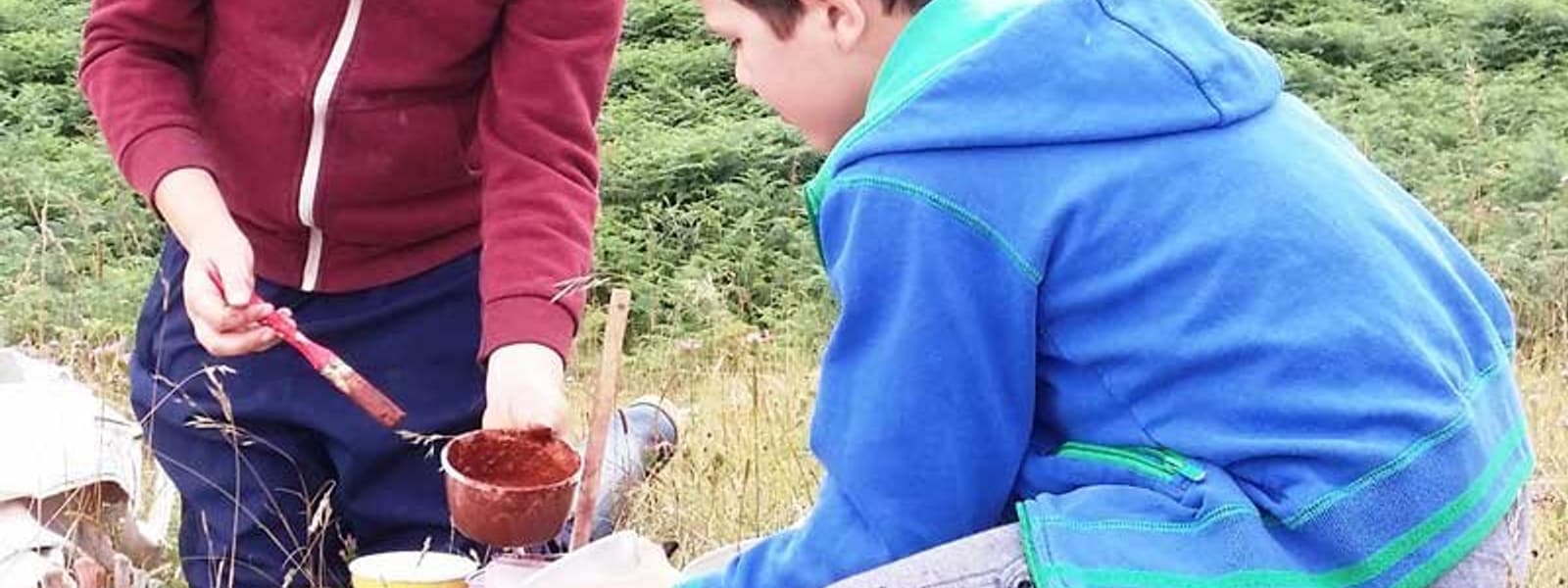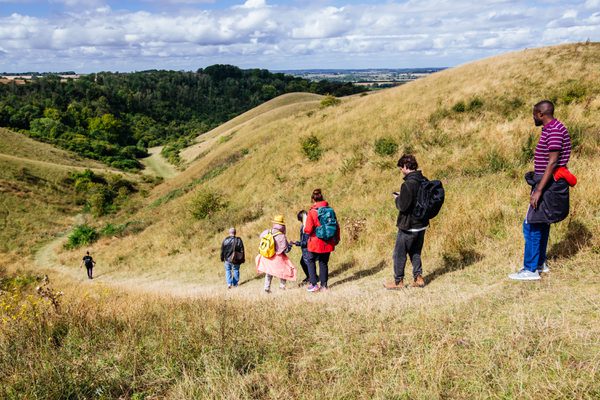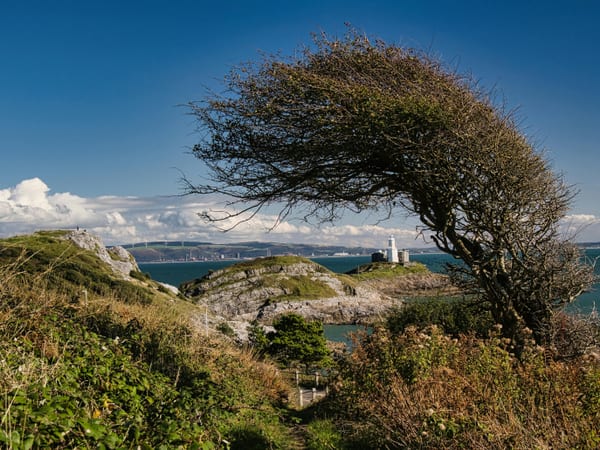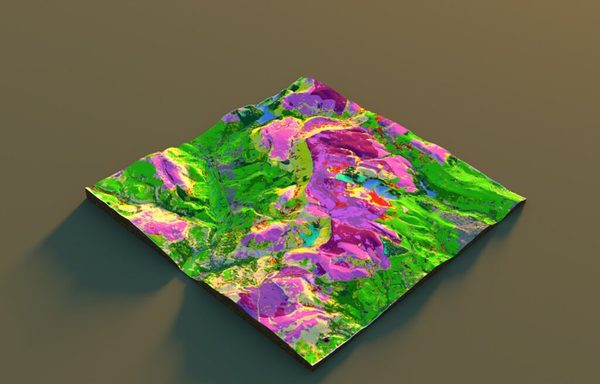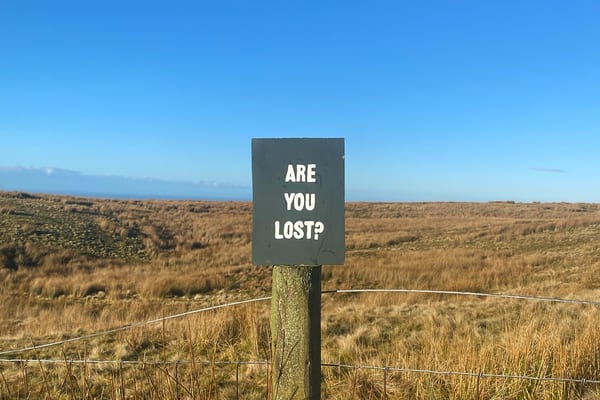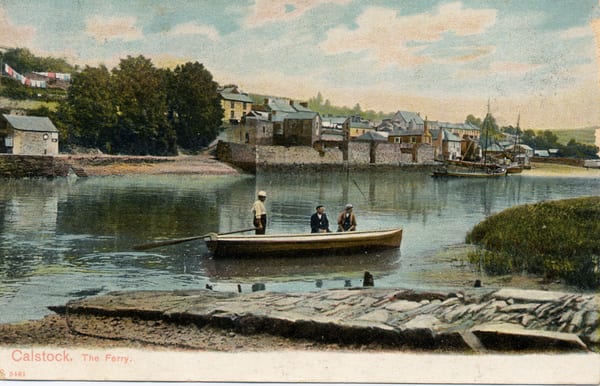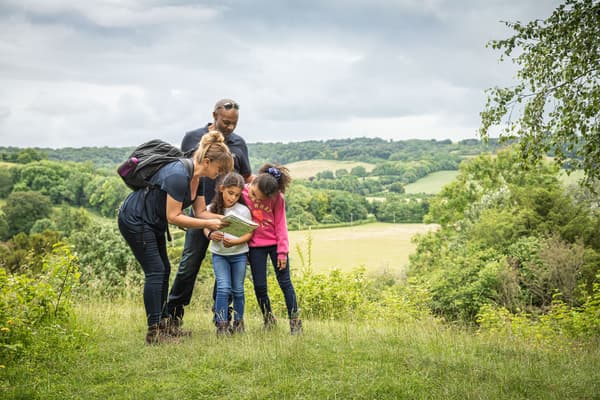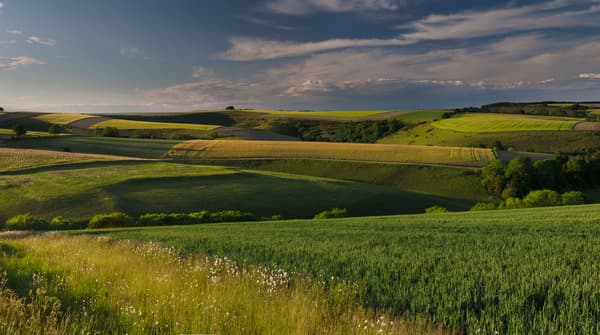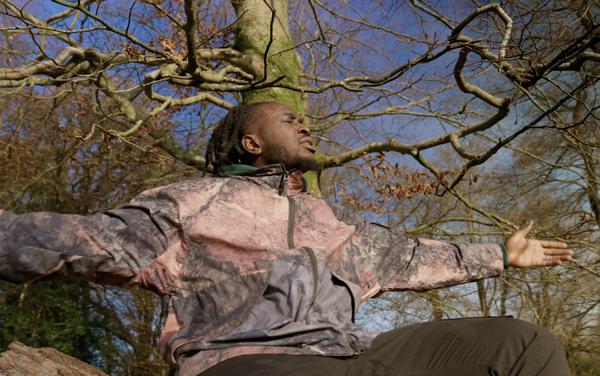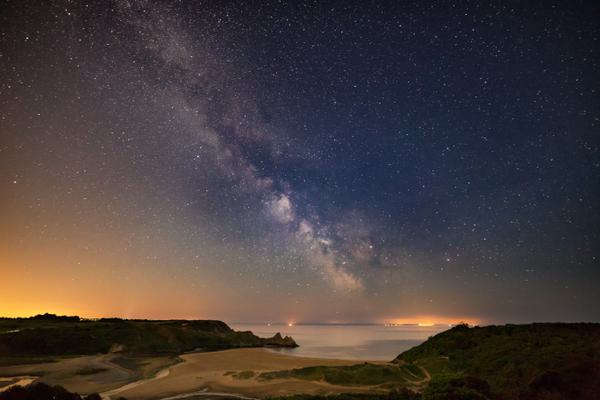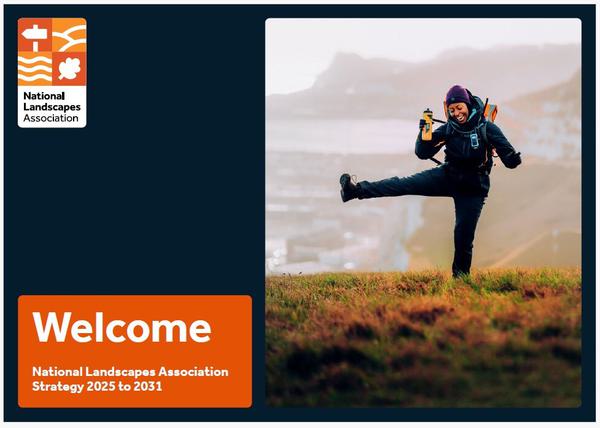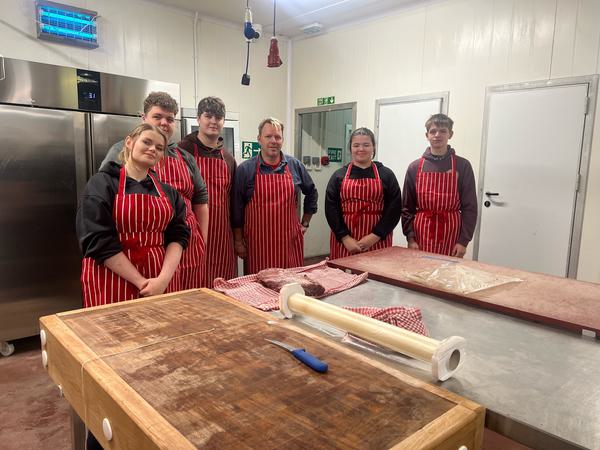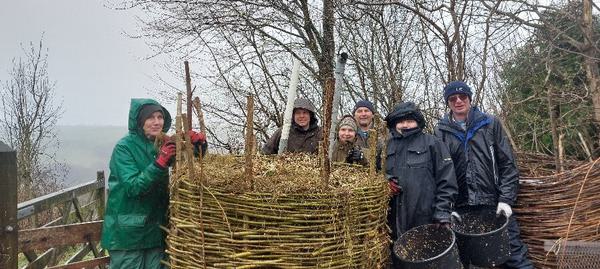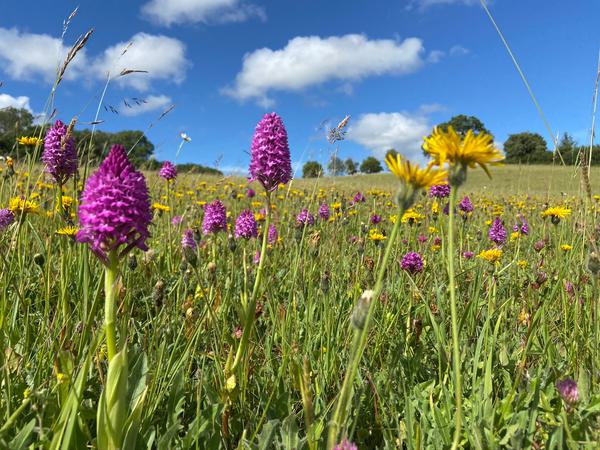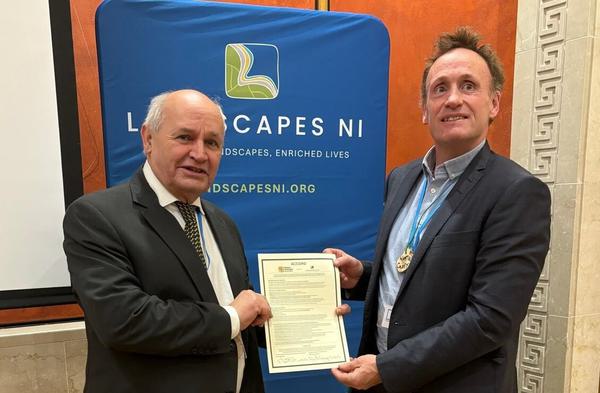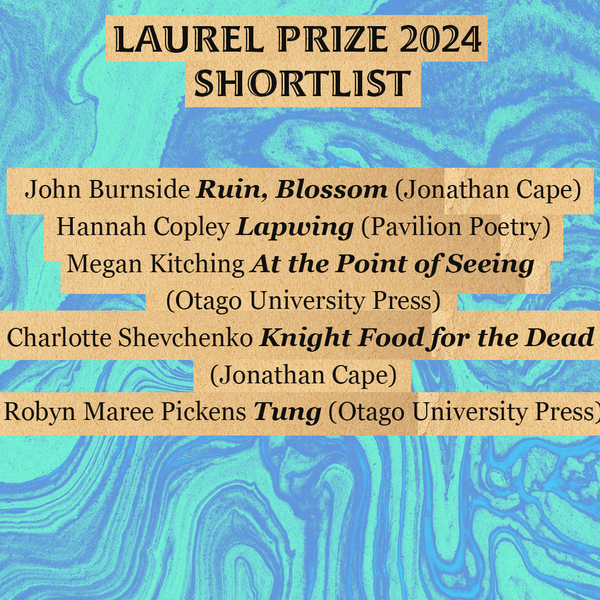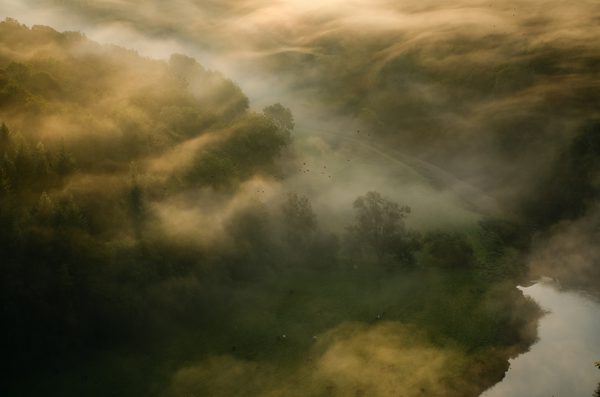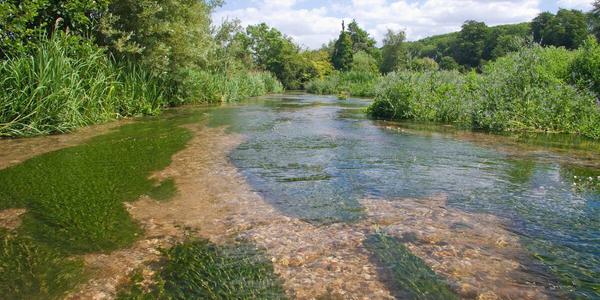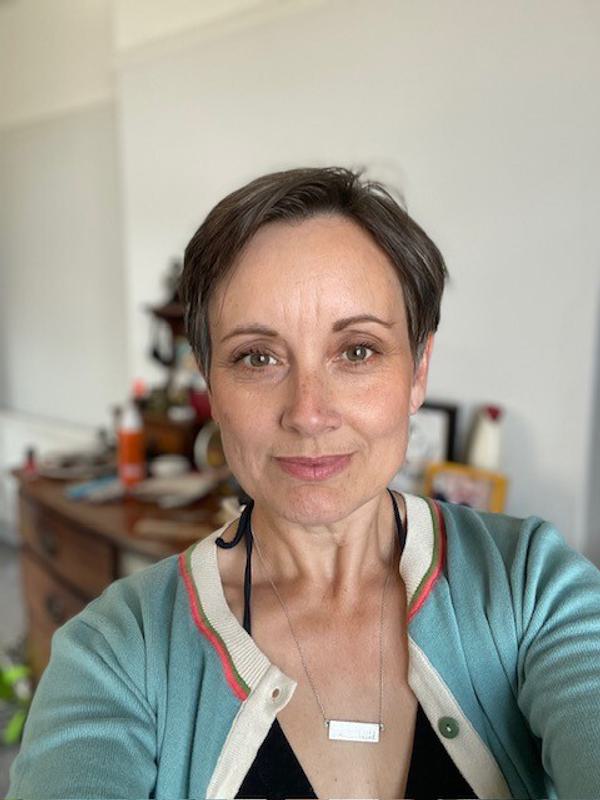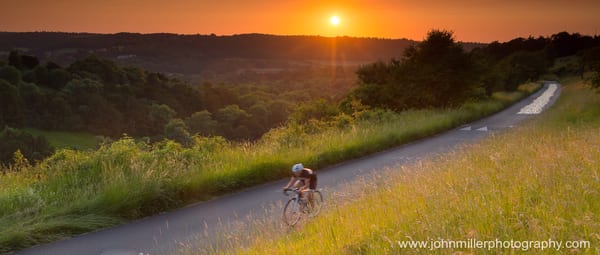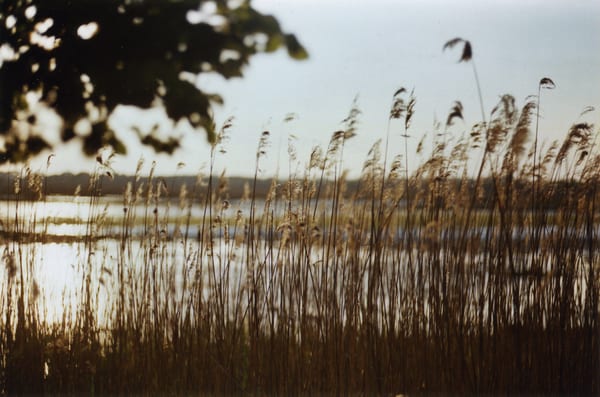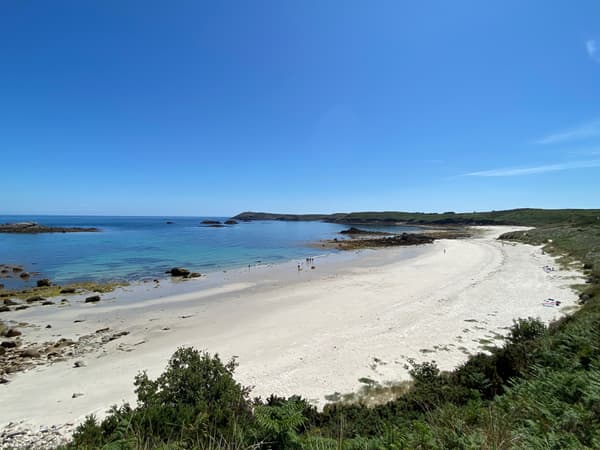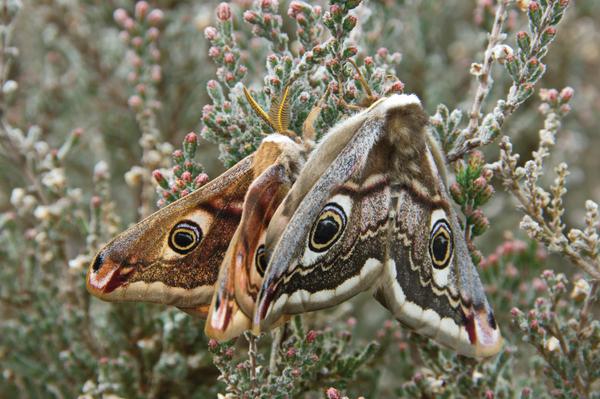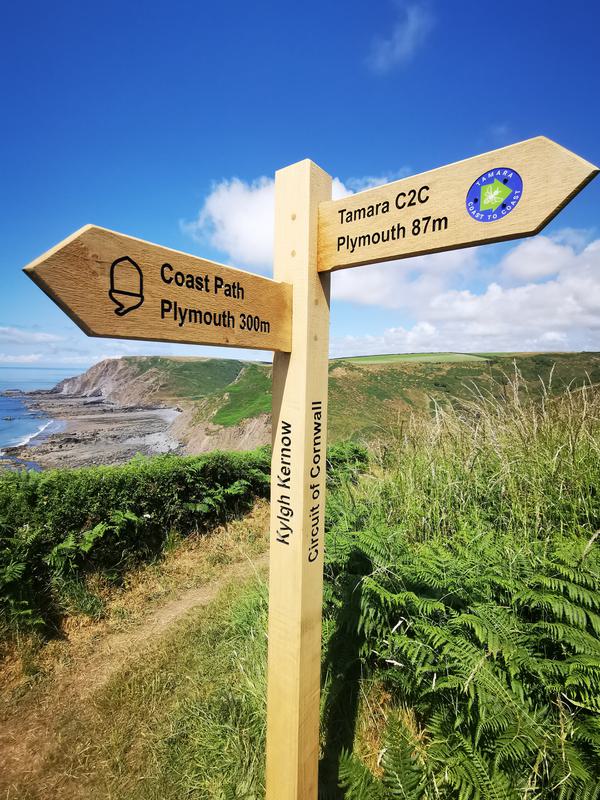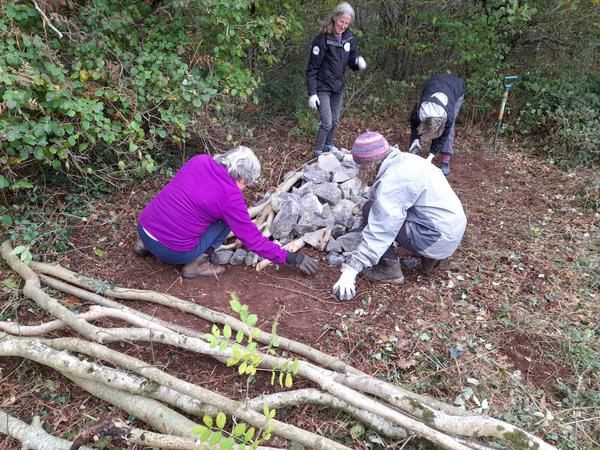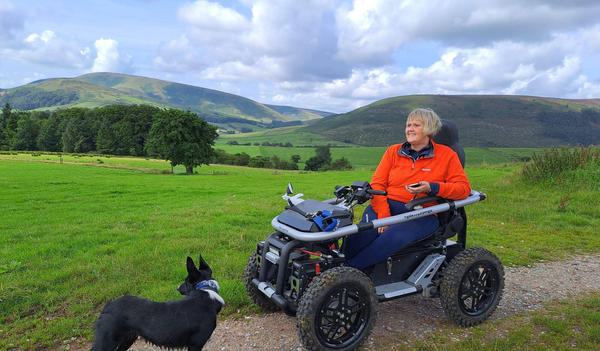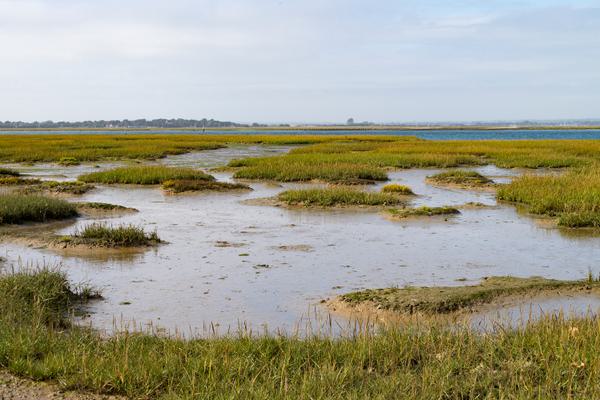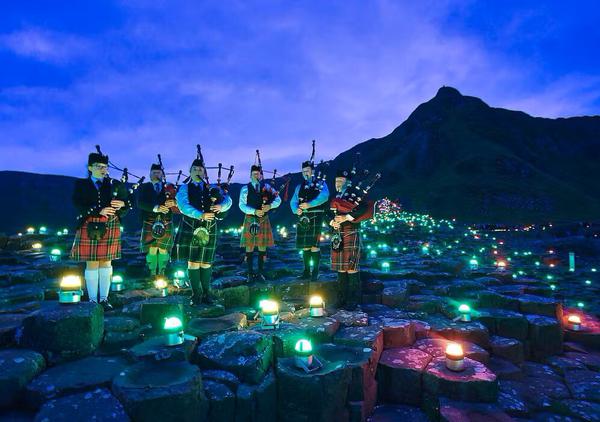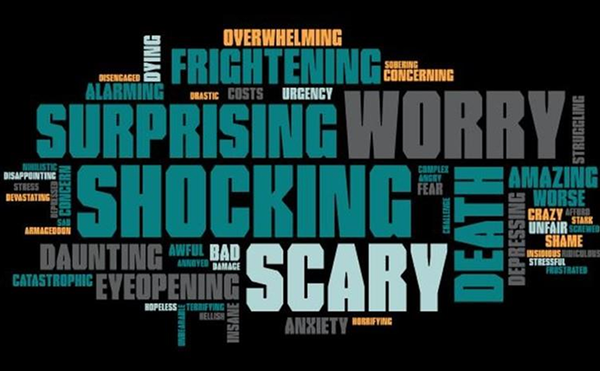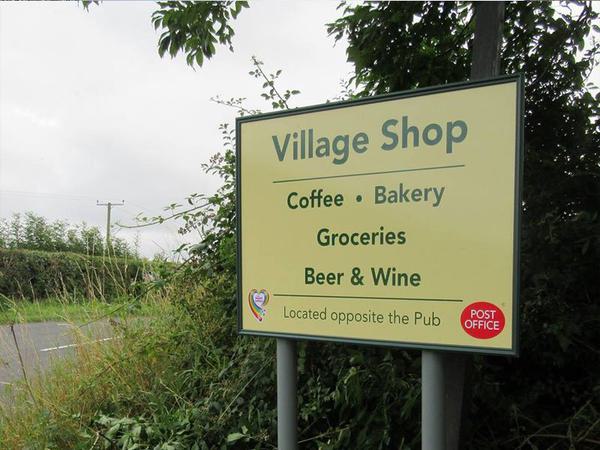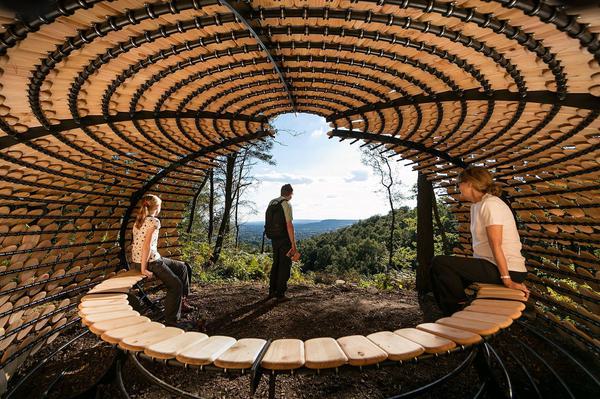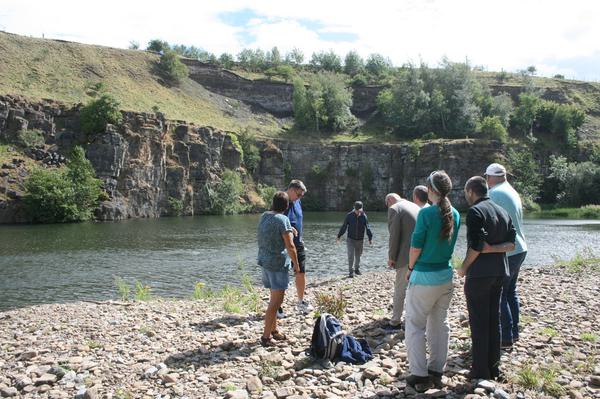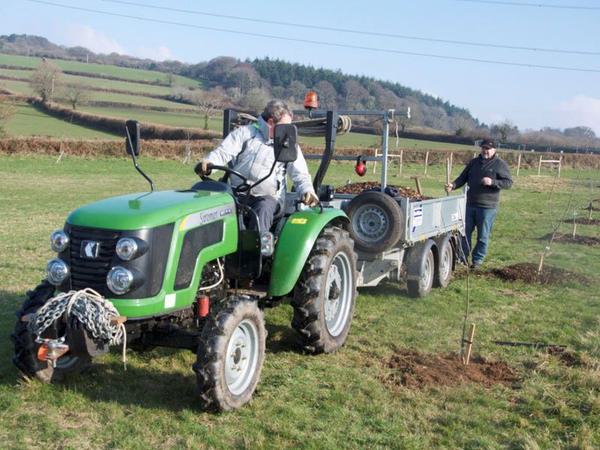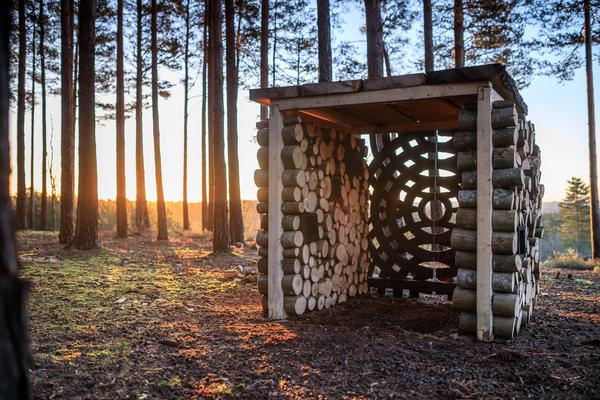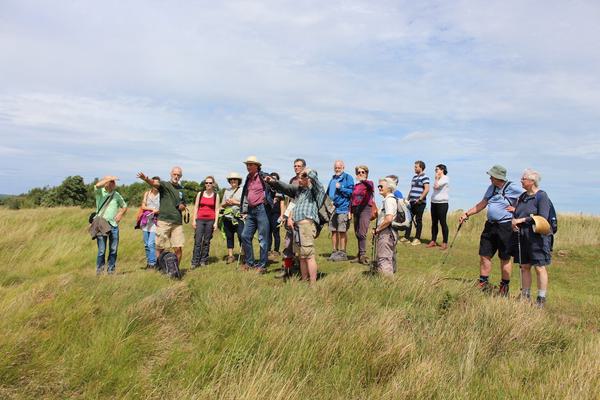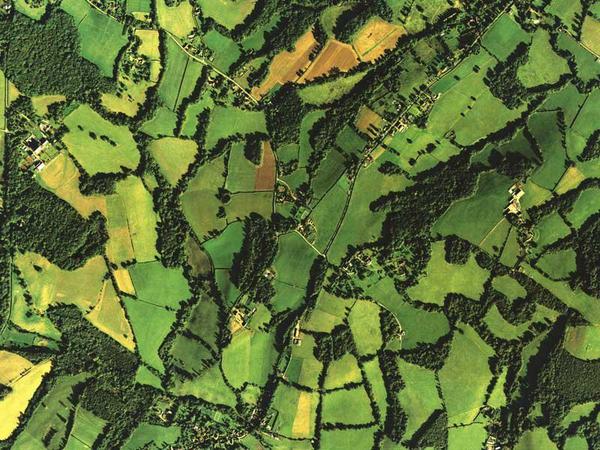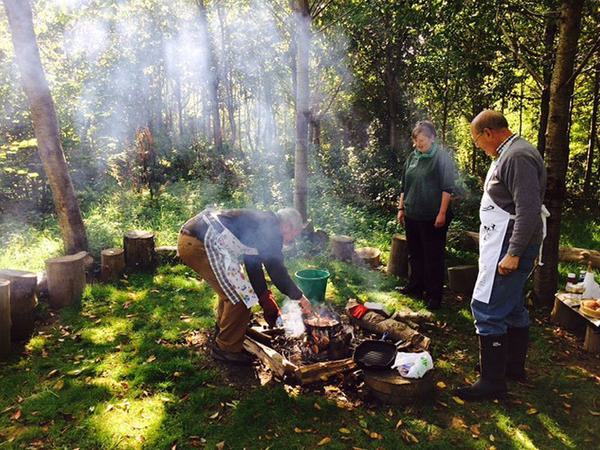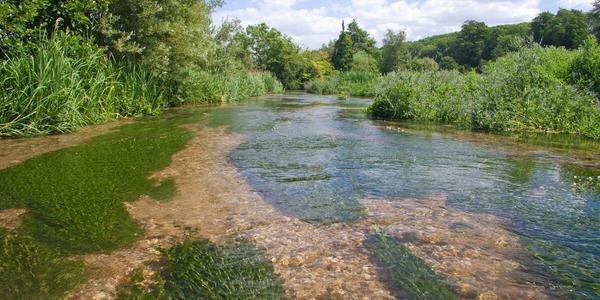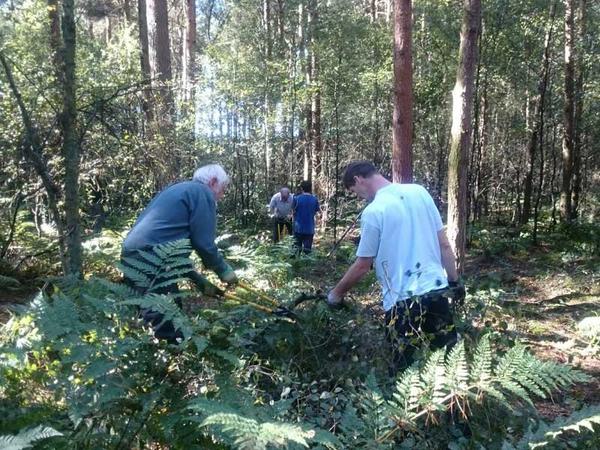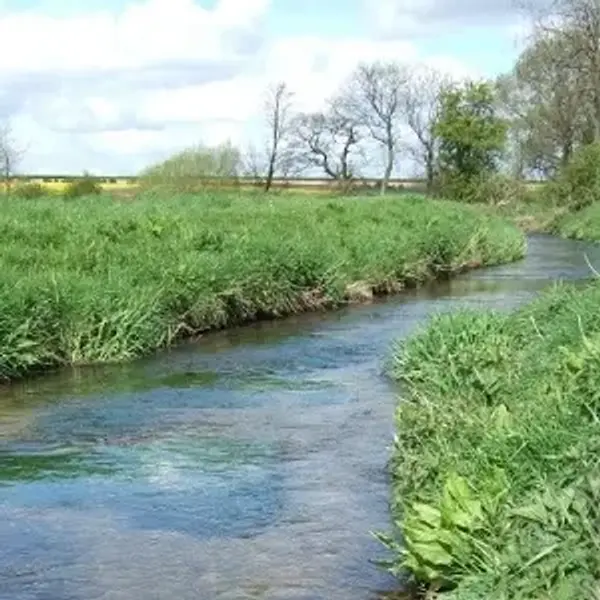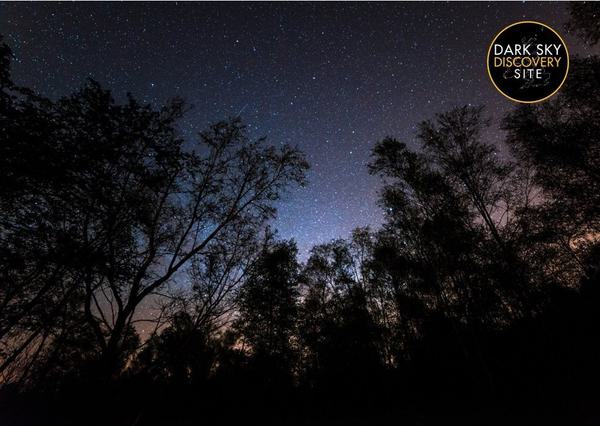Discovering Black Down
Discovering Black Down was a three year project (2013-2016) funded by the Heritage Lottery Fund. The project was designed to raise awareness of the wildlife and archaeological value of the Black Down and Burrington Commons through activities, events and training.
This special site is designated as a Site of Special Scientific interest for its valuable wildlife habitats and a Scheduled Monument for its archaeology from the late Stone Age and Bronze Age through to the Second World War.
With over 600,000 people living within a short journey of Black Down and Burrington Commons, and being very visible and accessible, the Commons were under increasing pressure from the number and variety of users. The numbers of walkers, cyclists and horse riders combined with conditions created by weather and soil type were causing damage to the archaeology and the erosion of large areas where paths had been widened by users and water run off.
The project has been hugely successful in raising awareness of the heritage landscapes, biodiversity and archaeological features of the Burrington Commons. By using imaginative techniques to engage a very broad range of people in fun enjoyable activities and a range of learning, interpretation, participation and volunteering programmes.
As a result of the project there is a much greater appreciation of the Burrington Commons resulting in better managed and sustainable access.
The legacy of Discovering Black Down has been to ensure local community and user group volunteers continue to play an active role in the care and conservation of this area’s heritage.
What was done
1. To provide opportunities for people to participate in the management of the heritage.
6 volunteer days with 52 volunteers were held to manage the scrub invasion on Burrington Camp, an Iron Age ill enclosure and to erect fencing to control erosion on Black Down. Volunteers have carried out surveys throughout the project
2. To engage representatives from different recreational user groups in activities to access and use the area more sustainably.
The Black Down user group was set up and met which brought together representatives from all the groups that use Black Down. Horse riders , walkers mountain bikers, geocachers all met to discuss the various issues they had with using Black down and the issues they had with other user groups. The chance to explain the issues of individual sports helped to break barriers down and enable useful discussion s on the management and use of Black Down.
Two Horse Riding with Respect events were held to target regular users of Black Down in order to explain the sensitive nature of the habitats and underlying archaeology of the site and how to ride carefully and avoid sensitive areas. 18 horse riders learnt all about the site and where the bridlepaths allowed access.
Four mountain biking with respect events were held to teach mountain bikers about the sensitive nature of the wildlife habitats and underlying archaeology and how mountain bikes van harm them. On of the events was with the local Shipham Mountain biking group who have two regular events each week on their calendar. This was especially useful as they were very receptive to the message given out and subsequently helped to solve issues which arose due to teenagers digging jumps.
An output of the user group and the networking with users was the Sustainable access guide “Wise Ways for a Wild place” booklet. This gives information on the project and its aims and how to use the site in a fun and safe way whilst maintaining the integrity of the habitats and archaeology of the site.
3. To promote a better understanding of the heritage amongst local people and visitors through the delivery of a co-ordinated programme of interpretation, signing and activities.
Interpretation Boards: Sandford and Burrington Primary schools were actively involved in the design of the Interpretation boards. The three themes of the boards , History, geology and Wildlife formed the basis for field trips form the schools to learn all about the history of Burrington Ham and Black down, discover what wildlife lives there and how the underlying geology shapes the landscape and influences what habitats overly it. The schools not only took part in games and activities but produced artwork which was used in the final design of the interpretation boards.
Information signs were also designed and constructed and installed at 9 key entrances to the site to give visitors information on access routes and the fragility of the habitats and archaeology.
The events programme each year was targeted at a wide range of groups to disseminate the important messages of the project top as wide an audience as possible. There were family fun days such as “Still in the Stone Age” and A Journey Through Time” which involved games and activities to interpret the historical remains and explore historical themes. There were local history walks aimed at adults which looked at the general history of the site such as the “3.5 million years in 3.5 miles” walk and events looking at specific elements such as the World war II “Starfish” event for the Keynsham Local History Group.
A regular newsletter was sent out to all who had been on an event or who had signed up via the website. This gave out regular information on project details and events as well as information on the heritage of the site.
4. To encourage greater participation in the monitoring and recording of the condition of the heritage and improve the skills of volunteers. Scheduled Monument Condition Survey Training.
A training course was planned and organised to train volunteers on how to carry out condition surveys for scheduled monuments. 8 volunteers including students from Bath Spa university, were trained by Nick Croxson from English Heritage. The volunteers were than allocated scheduled monuments on Black Down to survey. The results were then given to English Heritage to update their records.
5. To actively involve recreational user groups in the design of signing, information and interpretation that will promote more sustainable use of the area.
Interpretation Boards: Three local primary schools were actively involved in the design of the Interpretation boards. The three themes of the boards , History, geology and Wildlife formed the basis for field trips form the schools to learn all about the history of Burrington Ham and Black down, discover what wildlife lives there and how the underlying geology shapes the landscape and influences what habitats overly it. The schools not only took part in games and activities but produced artwork which was used in the final design of the interpretation boards.
6. To involve volunteers in monitoring the numbers of people who access the heritage, and their impact upon it.
17 sensors were installed at key entrances to detect the number of walkers bikers and horse riders accessing the site. The data loggers were buried underground and had to be periodically dug up and the data cubes replaced and the loggers reset. Due to the pressure of time available by volunteers this element of the project was not carried out by them, the volunteers instead choosing to carry out more interesting duties elsewhere.
7. To provide supportive volunteering opportunities to the young unemployed from the areas surrounding the Mendips, via an accredited program of practical environmental conservation which develops an understanding of the heritage.
The discovering Black Down Project worked in partnership with the Somerset Rural Youth Project to deliver a three year Green Activity programme. The accredited program of practical environmental conservation tasks aimed to improve employability and employment chances and enhance young people’s learning opportunities and qualifications.
28 long term unemployed young people took part in the accredited training scheme involving learning new skills on practical conservation tasks. Of the 28 Youths that took part 18 went on to either employment, apprenticeship, traineeship, volunteering or full time education. This high level of engagement and motivation indicates that this element of the project was extremely successful.
8. To provide opportunities for students from Bridgwater College to engage in an accredited program of practical environmental conservation which will improve employability and employment chances, whilst participating in the management of the heritage.
Early in the project due to changes in curriculum and staffing Bridgwater College were not able to engage with the project as planned. The project officer and AONB team established links with Bath Spa University and City of Bristol College. Students have been involved in practical training and tasks, surveys and monitoring, supporting events and placements providing general assistance to the Project Officer.
9. To provide the opportunity for local archaeological and history groups to research and discover the heritage, and interpret their findings to others.
Two consultants were engaged to develop the Local History Project element. This involved working with local history groups and interested volunteers to research the history of Burrington ham. A training day was delivered to teach the 17 volunteers historical research skills and techniques. A wide range of topics were researched and the following information sheets were produced and published on the Discovering Black Down website.
Hidden History of Burrington Ham
- Burrington Ham Walk
- Archaeology
- Caves
- Creative Connections
- Geology
- The Hill Gardens
- Industry
- Management of The Commons
- Natural History
- Recreation
10. To work will local ramblers groups to deliver an annual walking and riding festival that will help people discover and enjoy the heritage.
This has been combined with the delivery of the wider events programmes. Local ramblers groups have worked alongside other groups to deliver programmes of themed walks and activities spread throughout the 3 years of the projects.
11. To provide opportunities for local people and visitors of all ages to discover and appreciate the wildlife heritage through a programme of annual wildlife walks.
The annual events programme provided a range of wildlife walks aimed at discovering and investigating the wealth of wildlife found on Black Down and Burrington Ham. There were Bat walks which were led by the Somerset bat group who brought along bat detectors for everyone to use. There were Fungi walks, Looking at Lichen identification days, the Somerset botany Group lead plant identification and surveying sessions. The Somerset Bird group led a Dawn chorus walk. Family fun days were organised to look at minibeasts , bees and animal signs which nurtured our future naturalists.
12. To work with local primary schools to help young people discover the heritage and wildlife and how it changes through the year.
An educational consultant and the project officer worked with Shipham First School and Burrington Primary school to design a Schools Nature Journal. The schools Nature Journal is an important part of the legacy of the Discovering Black Down Project. It is a self-guided educational booklet which allows schools, families and individuals to discover and learn all about the wildlife history and geology of the Burrington Ham. It contains lots of ideas for learning and activities and games that can be undertaken whist exploring the various habitats on the common.
The children carried out research and tested the various elements on a series of visits to the site over the period of a year. The resulting exciting document allows the visitor to revisit the site each season to log the changes and discover how the commons change throughout the year. The children’s artwork and photographs were used in the design of the Nature Journal. A copy of the journal for every child was sent to all the local primary schools. A teacher training session was held to train 9 teachers how to use the Journal and familiarise themselves with the site.
13. To provide opportunities for young people to discover the subterranean heritage.
An educational consultant and an artist worked with the Churchill and Sandford Scout group on a “What Lies Beneath” project. A visual presentation on the geology of Black Down was followed by a session of interactive activities including rock testing and inscribing and cave art painting. This was followed up with a visit down Goatchurch cavern in Burrington Combe to explore the geology and wildlife of a cave system.
Another Educational consultant worked with a year 5 and year 6 class from Blagdon School. The “Summer Cave Poems” project a day caving in Goatchurch cavern followed by a day’s creative workshop. The stories told by the cave leader on the caving trip and the experiences and wildlife encountered all fed into the creative process back at school. The result was that the children learnt all about the geology and wildlife of a cave system and participated in a new and exciting experience. These learning opportunities were then utilised to deliver a key part of the literacy curriculum.
14. To allow a wide section of the local community, schools and young people to discover and interpret the WW2 heritage.
An Educational Consultant was employed to research and deliver the Starfish Element of the Project. This focused on the story of the world war Two decoy town which was created on Black Down during the war and kept a secret until relatively recently. Several people who were around at the time of the war were tracked down and kindly gave interviews for the oral history element. Their stories shed light on this forgotten and secret history of Black Down.
The Blagdon History society carried out a survey of depressions in the area to see if they were bomb craters or mineral extraction workings. Depressions on Burrington Ham which were thought previously to be bell pits were re defined as Bomb craters.
A film company worked in partnership with the consultant and the DBD project Officer with a class from Blagdon Primary School to research and produce a short film about Starfish. The class spent a day on Black Down looking at the WWII bunker where the control panel and generators for the decoy lights were housed, searched for evidence of the decoys out on the common and explored the bomb craters left by the bombs attracted by the decoy. They then spent two days in the classroom producing art and creating the animations for the film as well as filming live sequences and doing voiceovers. The result was a very high quality short film that was entered into a regional film completion.
Over 70 people attended the world premiere of the film in Blagdon Village hall followed a week later by 40 people attending a talk on the history of WWII on Black Down. The film premiere was attended by two of the people who gave oral history interviews and were eagerly questioned by those who attended.
Blagdon Scout group and Keynsham Local History group were also so interested in the history of Starfish that they had their own guided walk to learn all about this important chapter in the history of Black Down.
15. To provide opportunities for the local community, visitors and young people to discover the heritage through orienteering activities.
The Bristol Orienteering Klub (BOK) surveyed designed and produced orienteering maps for Burrington Ham and Black Down. Three “Have a go” orienteering events were held for members of the public to learn how to use an orienteering map and compass. BOK also planned organised and ran 2 national orienteering events on the site.
As part of the legacy of the project an permanent orienteering course was designed and installed with posts and orienteering markers positioned all over Burrington Ham to encourage visitors to explore the wider site. The orienteering map is available to download for free off the DBD web site.
16. To allow the local community to explore and interpret the heritage of the area through the medium of photography.
A one day photography course was delivered by a professional photographer who taught 7 participants the skills and techniques for taking better photographs of the landscape and wildlife of the Burrington commons.
A photographic competition was organised and ran to encourage visitors to explore the site throughout the year and view the amazing landscape and wildlife form different perspectives. Over 45 entries were received from those who attended the photography course and other keen photographers. The top 12 photographs were turned into the 2016 Black Down Calendar which celebrated a year in the life of Black Down and Burrington Ham.
17. To develop a co-ordinated programme of events and activities with local scouts, guides and explorer groups and youth groups.
An educational consultant worked with Shipham Scouts to help them gain their Naturalist badge. The scouts had a talk on minibeasts followed by a session out on Black Down carrying out an invertebrate survey.
Another Environmental Consultant delivered a caving project with the Blagdon Scouts. The scouts went down Goatchurch cavern and then followed up the visit with a creative session indoors using creative writing and artwork.
The same consultant also worked with Blagdon Rainbows, Brownies Guides and cub groups on the Letters to the future project. The project looked at themes of images and messages being passed from one era to another. The youths explored the themes of cave painting and looked at what they may have written about where they lived if they could have done. The groups went out on Burrington Ham to explore and discover what was there. They then produced letters themselves to future people describing what their lives are like and what the area they live in is like. The letters and artwork were put on display in Blagdon Village hall where over 100 visitors viewed the results. A selection of letters poems and artwork were then put in a time capsule in the local primary school attic to be opened by children in 25 years’ time.
Outputs/Outcomes
Number of Volunteers: 268: = total volunteer 1133 hours
Number of people received training: 74
Numbers of people attending events and activities: 840 people attended 61 events.
Learning
The employment of a full time project officer for 3 years to deliver the project allowing the time to develop lasting connections with local communities and user groups.
The ability to engage a range of specialist contractors to deliver key elements of the project bringing together many strands of technical knowledge and creativity to engage a range of audiences.

Discovering Black Down, “Starfish” The Film
The project has been hugely successful in raising awareness of the heritage landscapes, biodiversity and archaeological features of the Burrington Commons. By using imaginative techniques to engage a very broad range of people in fun enjoyable activities and a range of learning, interpretation, participation and volunteering programmes. As a result of the project there is a much greater appreciation of the Burrington Commons resulting in better managed and sustainable access.
Project Manager
I think it is brilliant that events of this quality can be offered to the public free of charge - very, very impressed! My children (and me) thought it was interesting and fun - thank you
Participant
